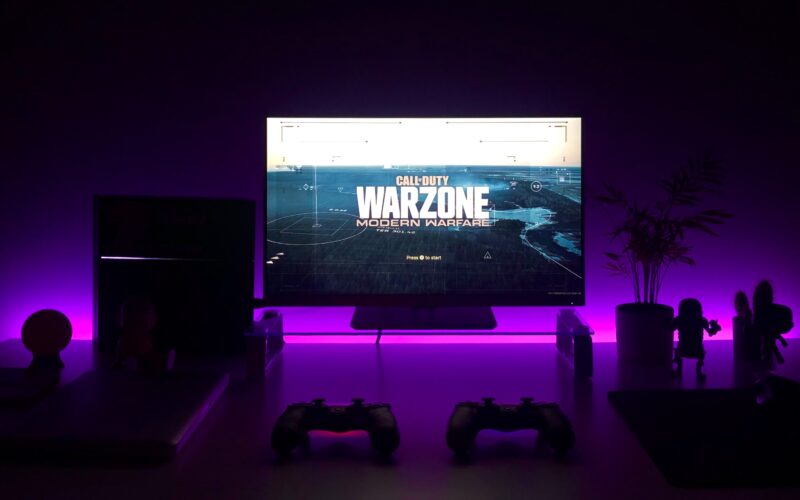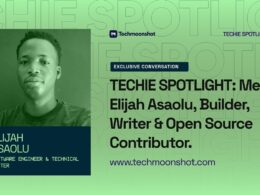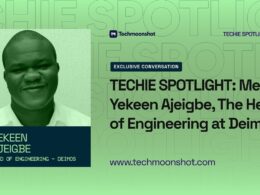In an era where career pivots have become increasingly common, few stories are as compelling as that of Akinola Olutola—a software engineer who traded the operating room for the server room. His journey from studying Human Anatomy to architecting large-scale cloud and data systems stands as a testament to reinvention, relentless curiosity, and the surprising harmony that can exist between two seemingly unrelated worlds.
After beginning his academic path in Human Anatomy, Akinola eventually discovered a deeper calling in technology—one that demanded the same precision, analytical thinking, and problem-solving instincts that define the sciences. What started as a shift in interest evolved into a full-fledged engineering career shaped by cloud infrastructure, API design, artificial intelligence, and high-impact systems powering thousands of users.
Today, his profile reflects not just a transition, but a thoughtfully engineered transformation: from anatomy labs to backend systems, from cadaver studies to cloud deployments, and from understanding the human body to understanding how software moves through digital ecosystems. It’s an unconventional story—one that highlights the power of adaptability, the value of multidisciplinary thinking, and the courage to pursue a path that feels right, even when it looks nothing like the one you started on.
In this exclusive conversation, Akinola opens up about the courage it took to change paths, the discipline that helped him rebuild from the ground up, and the unexpected parallels he discovered between understanding the human body and understanding distributed systems.
What originally inspired you to choose a career in software engineering despite having an academic background in Human Anatomy?
I’ve always been drawn to ideas and computing, but watching The Social Network—the story of Facebook and Mark Zuckerberg—was the catalyst that changed everything for me.
My background in Human Anatomy taught me to think in systems: how small components interact to create complex outcomes. When I discovered programming, I realized software operates on the same principles—logic, structure, cause, and effect. That systems thinking clicked immediately. I transitioned into software engineering because it gave me the power to create solutions with real-world impact, especially in healthcare, where data, automation, and technology can transform outcomes at scale.
What aspect of software engineering gives you the most satisfaction today?
The creative challenge of turning complexity into clarity—that’s what keeps me energized after years in this field. There’s something deeply satisfying about taking a chaotic mess—whether it’s tangled data pipelines, vague product requirements, or system bottlenecks causing production fires—and transforming them into elegant, reliable, scalable solutions.
I compare it to solving a complex puzzle where the pieces keep changing shape, but the satisfaction comes from finding patterns in the chaos. Every engineering problem has a beautiful solution hiding beneath the surface noise. My job is to excavate that solution through careful analysis, creative problem-solving, and iterative refinement.
But what truly never gets old is the human element. Watching something I’ve architected make someone’s daily work smoother, seeing a business process that used to take hours now complete in seconds, or hearing from users who tell you your product genuinely improved their workflow—that’s the real reward. Code isn’t just abstract logic; it’s a tool for making people’s lives better. When you keep that human impact at the center of your work, even debugging at 2 AM takes on new meaning.
What was the most intimidating engineering concept you faced when you were still new in the field?
Data structures and algorithms were my Mount Everest. Coming from a medical background where I understood biological systems intuitively, encountering concepts like recursion, binary trees, heaps, hash maps, and graph traversal felt like learning a completely foreign language with no translation dictionary.
Recursion particularly humbled me. The idea that a function could call itself seemed simultaneously elegant and bewildering. I’d stare at recursive implementations thinking, “How does the computer even keep track of all these nested calls?” Understanding the call stack, base cases, and how recursion elegantly solves problems that would be nightmarish with iteration—that took time and many, many whiteboard sessions.
Binary search trees, balancing algorithms, understanding when to use which data structure for optimal performance—these weren’t just academic exercises. They fundamentally changed how I approached problem-solving. Once you understand why a hash map gives you O(1) lookup versus O(n) for an array scan, you start seeing optimization opportunities everywhere in your code.
But here’s what I learned: grit and persistence trump raw talent every single time. The engineers who succeed aren’t necessarily the ones who grasp concepts immediately—they’re the ones who keep showing up, who tackle the same problem from different angles until it clicks, who aren’t afraid to look foolish asking “basic” questions.
You’ve worked on large-scale systems in cloud and automation—what project has challenged you the most in your career?
One project stands out as both my greatest challenge and most significant learning experience: building a comprehensive networking infrastructure to automate business processes and deployment pipelines for multiple enterprise clients whose operations were critically dependent on our platform.
The scope was intimidating. We weren’t just automating individual workflows—we were creating an interconnected ecosystem where changes in one system rippled across entire business operations. The clients relied on this infrastructure for core business functions, meaning downtime wasn’t just inconvenient; it directly impacted their revenue and customer relationships.
The technical complexity was multilayered. We had to design for high availability across multiple cloud regions, implement sophisticated monitoring and alerting systems, build self-healing mechanisms, and ensure the platform could scale elastically as client demands fluctuated. Every architectural decision had cascading implications.
What personal trait do you believe has contributed most to your growth as an engineer?
Curiosity—relentless, almost childlike curiosity—is the engine that has driven my entire career. I can’t help but ask why something works the way it does. When I encounter a new tool, framework, or architectural pattern, my immediate instinct is to peek under the hood and understand the underlying mechanisms.
This curiosity manifests in several ways in my daily work. When debugging, I don’t just fix the immediate symptom—I dig until I understand the root cause and why it emerged. When learning a new technology, I don’t just memorize the API; I explore its design philosophy and the problems it was built to solve. When reviewing code, I ask why specific approaches were chosen and what alternatives were considered.
This trait has led me down countless rabbit holes that might seem like distractions but always pay dividends. Spending a weekend understanding how Docker actually implements containerization at the kernel level helped me optimize our container strategy months later. Deep-diving into database query execution plans and index structures transformed my ability to write performant queries. Understanding how TCP works at the protocol level made me far better at diagnosing network issues.
What’s one fun or surprising misconception people have about what you do for a living?
The biggest misconception is that software engineering is primarily about typing code quickly—that we’re essentially highly paid typists who crank out lines of code like factory workers on an assembly line. Movies and TV shows perpetuate this image: hackers frantically typing, green text scrolling rapidly across black terminals, problems solved in minutes through sheer typing speed.
The reality couldn’t be more different. I’d estimate that engineering is 80% thinking, designing, debugging, communicating, and asking the right questions—and maybe 20% actually typing code. The real work happens before your fingers ever touch the keyboard.
A typical day might look like this: I spend an hour in the morning reviewing system metrics and logs, identifying patterns or anomalies. Then perhaps two hours in collaborative design discussions, whiteboarding potential architectures and debating trade-offs with the team. Another hour reviewing pull requests, understanding why teammates made specific implementation choices, and suggesting improvements. Maybe thirty minutes in a meeting with product managers, translating business requirements into technical specifications. An hour reading documentation or research papers about approaches to a problem we’re facing.
What’s the funniest or most unexpected bug you’ve ever encountered?
I once spent six grueling hours tracking down a critical production issue that had our entire team in emergency response mode. Users were reporting intermittent failures, but the error messages were vague and unhelpful. The issue seemed to appear randomly, affecting only certain requests under specific conditions we couldn’t quite identify.
I went through the entire playbook: checked recent deployments for changes, analyzed logs across all services, examined database performance metrics, verified network connectivity, reviewed recent infrastructure changes, and stress-tested various components in our staging environment. Everything looked normal. The architecture was sound, the code logic was correct, our monitoring showed healthy systems.
I escalated, bringing in additional engineers. We pair-debugged, examined traffic patterns, checked for race conditions, reviewed our caching layers, analyzed request payloads. Hours passed. The pressure mounted as the issue continued affecting customers.
Finally, in a moment of desperate thoroughness, I examined our configuration files character by character. And there it was: a missing comma in a JSON configuration file. One single missing comma had caused the parser to misinterpret the entire configuration block, leading to incorrect service routing under specific load conditions.
What type of music or playlist helps you think clearly when you’re deep in code?
I lean toward Christian music, some Afrobeats, and calm instrumentals. Something rhythmic enough to keep me in flow, but mellow enough not to distract from problem-solving.
You’ve built automation platforms and contributed to systems used by thousands—what motivates you when working on high-impact products?
At its core, my motivation comes from knowing that behind every API call, every database query, every line of code I write, there are real people whose lives are affected. The end users—whether they’re internal team members, business customers, or consumers—are what drive me forward, especially during challenging projects or frustrating debugging sessions.
Building something that people genuinely use and love is the deepest desire of most software engineers, though we don’t always articulate it that way. We might talk about elegant algorithms, optimal time complexity, or sophisticated architectures—but underneath that technical language is a fundamental drive to create tools that make life better.
What’s one everyday habit or routine that keeps you focused and productive?
The most transformative productivity habit I’ve developed is time-blocking—specifically, planning my day in small, achievable blocks of focused work. Instead of having vague intentions like “work on the API today,” I break every task into 30–60-minute focused sessions with clear, specific objectives.
A typical day might look like: 9:00-9:45 AM – Review pull requests and provide feedback. 10:00-11:00 AM – Design the caching layer for the new feature. 11:15 AM-12:00 PM – Implement the first endpoint with tests. This approach has multiple benefits that compound over time.
Who has been the biggest influence on your personal or professional journey and why?
My faith in God has been my backbone, guiding and supporting me through every challenge. My mom also played an incredible role—she supported me through school and has been an amazing parent. I’m deeply grateful for her sacrifices and belief in me.
What is the most underrated skill every software engineer should develop?
Communication—clear, empathetic, adaptive communication—is far more valuable than any programming language, framework, or technical skill you’ll ever master. Yet it remains surprisingly undervalued in engineering circles, where technical prowess often overshadows soft skills.
Here’s why communication is transformative: Software engineering is fundamentally a team sport. You might write code alone, but you’re always building within ecosystems that involve designers, product managers, other engineers, stakeholders, and end users. Your ability to translate between technical and non-technical contexts, to explain complex systems simply, and to understand requirements that are often poorly articulated—these skills determine your actual impact far more than whether you can implement a red-black tree from scratch.
When you’re not writing code or solving technical problems, what activities help you unwind?
I love listening to music, watching sci-fi movies, spending quality time with family, and exploring new business or product ideas. Creating outside of code keeps me balanced and sparks fresh perspectives.
What’s one fun fact about you that most of your colleagues don’t know?
The irony of my career isn’t lost on me: I originally planned to become a medical doctor, following what seemed like a clear path from my Human Anatomy degree into medical school and eventually clinical practice. My family expected it, my academic background pointed toward it, and for years, I assumed that’s where I was headed.
Now I’m a software engineer creating applications, building distributed systems, and advancing businesses through technology—using none of the specific medical knowledge I studied for years but all of the systems thinking those studies instilled.
If you could instantly master any tech skill you don’t currently have, what would it be?
Without hesitation: advanced machine learning infrastructure—specifically, the ability to build and optimize large-scale training pipelines, implement sophisticated ML optimization systems, and design production-grade machine learning platforms that are reliable, scalable, and maintainable.
This isn’t just about wanting to ride the AI hype wave. I’m genuinely fascinated by the infrastructure challenges unique to machine learning systems. Unlike traditional software where the behavior is deterministic (given the same input, you always get the same output), ML systems are probabilistic and their behavior emerges from training data and model architecture in ways that are harder to predict and debug.
The infrastructure challenges are profound: How do you efficiently manage training datasets that might be terabytes or petabytes in size? How do you orchestrate distributed training across hundreds of GPUs or TPUs? How do you version models, track experiments, and ensure reproducibility when so many factors affect model behavior? How do you monitor model performance in production and detect when models degrade or produce biased results? How do you design systems that can retrain and deploy updated models without downtime?
What’s the most meaningful lesson you’ve learned from working across AI and cloud environments?
The deepest lesson I’ve internalized is this: no system exists in isolation. The best, most impactful solutions emerge when you understand how data, people, processes, and infrastructure all interconnect and influence each other in complex feedback loops.
Early in my career, I had a more naive, component-focused view: if each piece works correctly in isolation, the system will work. But distributed systems have taught me that the interactions between components often matter more than the components themselves. A perfectly designed service can fail in production because of unexpected network latency. A brilliant algorithm can produce harmful results if the training data reflects historical biases. A technically sound architecture can fail to deliver value if it doesn’t match how people actually work.
What is your favorite type of engineering challenge—performance, architecture, integrations, debugging, or something else?
I’m most energized by architecture and performance optimization—specifically, the sweet spot where these two concerns intersect and inform each other.
Architecture fascinates me because it’s where art and science converge. Unlike feature development where requirements are relatively clear, architectural decisions involve navigating ambiguity, making trade-offs between competing concerns, and designing for futures you can’t fully predict. Do you optimize for development speed or operational efficiency? Do you choose a monolith or microservices? How do you balance consistency and availability in your distributed system?
If you had to choose one superpower to help you at work, what would it be?
The ability to instantly understand any codebase—no matter how messy, tangled, undocumented, or buried in years of technical debt—would be an invaluable superpower, effortlessly saving countless hours otherwise spent deciphering legacy logic and completely eliminating the deep frustration that often comes with navigating outdated systems and poorly written code.
You’ve built products, contributed to open source, and mentored others—what personal value drives you to give back?
Impact, to me, is far more than the work we produce or the technical problems we solve—it’s about the ripple effect we create in the lives of others. I’ve always believed that knowledge isn’t meant to be hoarded; it’s meant to move, to evolve, to be passed down in ways that make someone else’s journey a little easier. When we share what we’ve learned, especially the hard lessons that shaped us, we give others a head start we never had. That’s the kind of contribution that lives beyond code, beyond timelines, and beyond any single role we hold.
I strongly believe that knowledge should flow forward. Every insight we offer, every explanation we give, and every moment spent helping someone else grow contribute to something much bigger than ourselves. In the tech ecosystem—where learning never stops, and everything is always changing—lifting others is not just an act of kindness; it’s an essential part of building a resilient, future-ready community. When one person grows, it creates momentum. When a group grows, it creates transformation.
What advice would you give to someone who feels stuck in their career and is unsure how to reinvent themselves?
Start small, stay consistent, and learn in public. Those three principles form the backbone of real transformation, no matter what field you’re stepping into or what identity you’re trying to build. Reinvention is often romanticized as a sudden breakthrough or a bold, dramatic leap, but in reality, it’s a slow and intentional accumulation of small wins. It’s choosing to show up even when the progress feels invisible. It’s committing to learn even when you’re unsure. And it’s trusting that the tiny steps you take today are shaping the future version of you that you haven’t met yet.
Reinvention isn’t one dramatic leap—it’s a series of small, deliberate steps repeated until they become your new identity. Every new habit you adopt, every piece of knowledge you acquire, and every challenge you push through becomes a brick in the foundation of who you’re becoming. The transformation happens quietly, in the moments when no one is watching—when you decide to practice again, when you try to understand a concept one more time, when you pick yourself up after a setback. Over time, these interactions with discipline and curiosity rewrite your story from the inside out.
Thank you for talking to us.
Thank you as well—I truly enjoyed our conversation.












